_Location: Amsterdam, Netherlands
_Company: Carve | www.carve.nlc
_Collaborators:
Redesign park | Buro Sant en Co landschapsarchitecten
Art objects | Atelier Joep van Lieshout
_Clients: Municipality of Amsterdam
_Size: e450m² (total play zone), total length of play garland: 50 meter
_Year completed: 2015
_Text credits: Carve
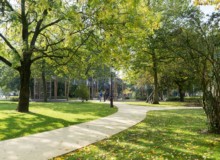
Amsterdam, Netherlands
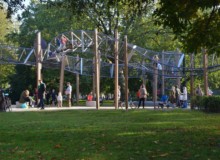
Amsterdam, Netherlands
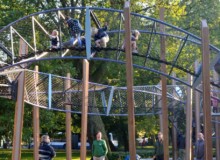
Amsterdam, Netherlands

Amsterdam, Netherlands

Amsterdam, Netherlands
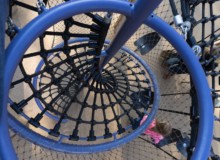
Amsterdam, Netherlands

Amsterdam, Netherlands
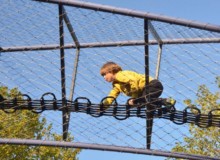
Amsterdam, Netherlands

Amsterdam, Netherlands
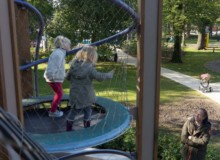
Amsterdam, Netherlands
Project Description
The Fredrik Hendrikplantsoen is situated west of the city center, in one of the greenest historic neighbourhoods of Amsterdam. In the 17th century this area was no more than a greenfield site, until in 1630, the ‘Houtzagerscompagnie’, the ‘Sawmills-company’, settled down here. The location was ideal because of its dominant west-wind, and the old system of trenches that enabled waterborne transport of timber. Between 1630 and 1670, as many sawmills were built that this area became known as ‘Molenbuurt’, or: ‘Mill’s district’. The sawmills gave the neighbourhood a pre-industrial character. In the 19th century, the Mill’s district were torn down because of a city extension: the Frederik Hendrikbuurt. The urban plan, drawn by Kalff in 1877, was based on the pattern of existing paths and trenches. It also proposed a mix of housing types, which is why the Frederik Hendrik district originally is a neighbourhood where people from all walks of life live together. The Frederik Hendrikstraat has always been the backbone of the distict, ending at the Frederik Hendrikplantsoen, a little green park that was built in 1886. Even today, some trees still date from that period. All mills, though, dissapeared, except for one; the ‘Otter’, which was built in 1631 and still is an important cultural-historical element in the Fredrik Hendrik district.
Throughout the decades, the Frederik Hendrikplantsoen deteriorated and was overgrown with bushes. Despite a well-organised resistance of the neighbourhood, in 2023 the Singelgracht parking garage will be built, counting 800 underground parking spaces. In the context of this development, the Frederik Hendrikplantsoen has been upgraded in 2012.
The new design re-connects the park with its surroundings, introducing a new path system and adding new functions to the park. The meandering paths connect the different parts of the park, among which a large playzone that is located exactly at the same spot where there used to be a circular sand pit and play objects. Together with local residents, Carve discussed the possibilities for the new play zones during an intensive participation process.
In the design, Carve connects the three planned playzones by introducing an iconic ‘air bridge’, that is oriented in the opposite direction to the path system below. Because of this, the paths of the park continue in an unobstructed way underneath the object. Also, because a large part of the playzone is elevated, as little space as possible is absorbed by the playzones, hence introducing an interesting interaction between the playing children and people who take a stroll underneath the object.
The play garland, which hovers a spectacular five meters above the ground, between the canopies of the historic trees, adds a new layer to the park. The three playtowers all have a different function, that is connected to a specific age group. Children can climb, lounge in hammocks and a large playnet, or jump on a trampoline at four meters height. The twisted play garland rests on metal poles, which are clad with wood, that will turn grey in time. Whoever takes a carefull look, will see little animal-icons embedded into the poles, as a subtle reference to the many sawmills that once stood here.







